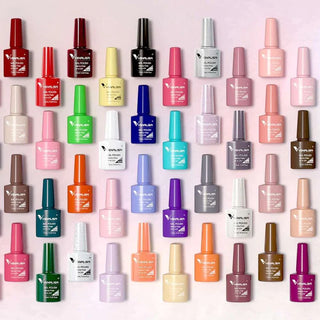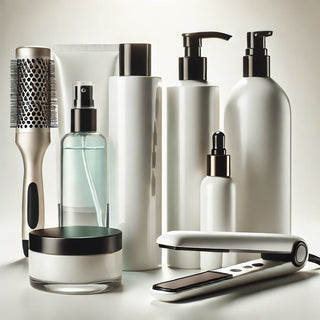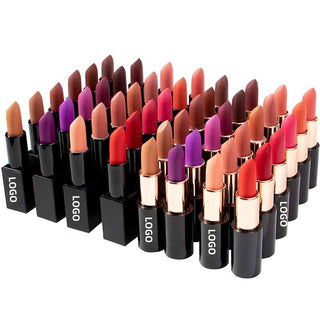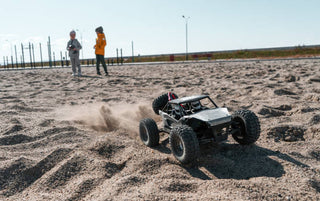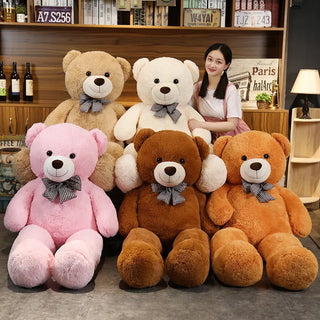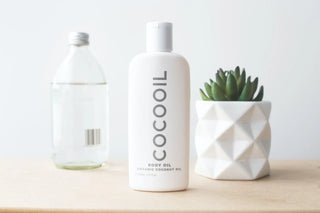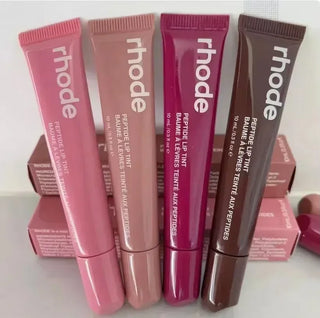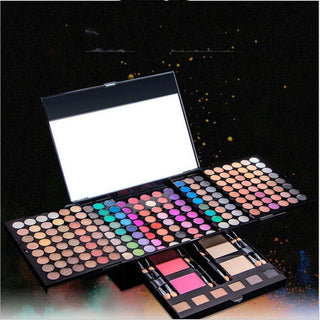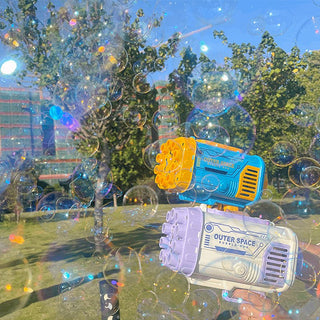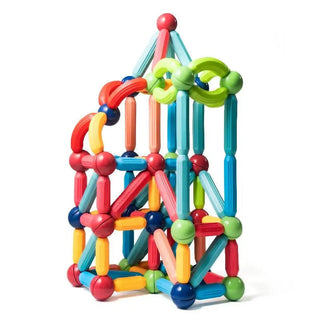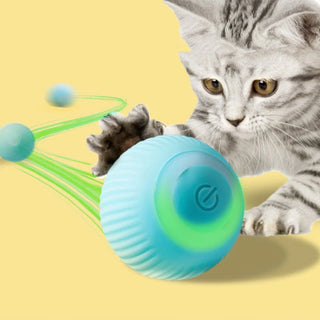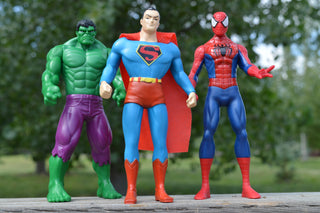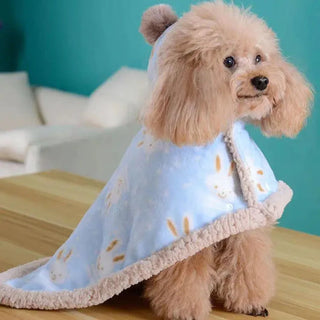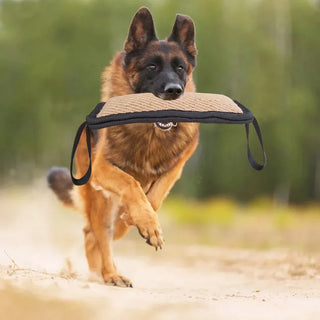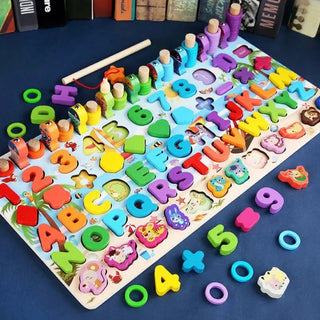Looking for a small furry friend to share your life with? Toy dog breeds are super cute and perfect for smaller living spaces. They don't need a ton of room to run around, which is great if you live in an apartment. Plus, many of them are really smart and can be trained easily. But remember, even though they're small, they still need attention, training, and exercise. It's also good to think about whether a breed is good with kids or if they're a good fit for someone with allergies. With so many different types of toy dogs out there, you're sure to find the best toy dog breeds for your perfect companion.
Key Takeaways
- Toy dog breeds pack big personalities into small bodies, needing specific training and socialization.
- Many popular toy breeds, like the Maltese and Toy Poodle, are considered hypoallergenic and require regular grooming.
- Consider a toy dog's energy level and temperament to match your lifestyle, whether you're active or prefer a calm companion.
- Some toy breeds are better suited for families with older children, while others thrive as companions for adults.
- Despite their size, toy dogs still need consistent training, exercise, and plenty of human interaction to stay happy and well-behaved.
1. Chihuahua
When you think of tiny dogs with huge personalities, the Chihuahua probably comes to mind first. These little guys, originating from Mexico, are truly pocket-sized, typically weighing under six pounds and standing just 5 to 8 inches tall. Despite their small stature, Chihuahuas are known for being alert, devoted, and spirited. They often form a very strong bond with one person, becoming incredibly loyal companions.
Big Watchdogs in Small Bodies
Don't let their size fool you; Chihuahuas make surprisingly good watchdogs. Their sharp senses mean they're quick to alert you to anything unusual happening around the house. They're not afraid to make their presence known, which can be a deterrent to unwanted visitors. It’s a good idea to socialize them early, though, so they’re comfortable around new people and situations.
Grooming and Exercise Needs
Chihuahuas come in two coat varieties: smooth and long. The smooth coat is pretty low-maintenance, usually just needing a quick brush now and then. The long-coated variety will benefit from a bit more regular brushing to prevent tangles. When it comes to exercise, they don't need much. Short daily walks or indoor play sessions are usually enough to keep them happy and healthy. They're perfectly suited for apartment living because of this.
Temperament and Training
These dogs are often described as having a
2. Maltese
When you think of a classic, elegant toy dog, the Maltese often comes to mind. These little dogs are just dripping with charm, and their history goes way back, making them a symbol of companionship for centuries. They originated in the Mediterranean, and honestly, they just have this air about them. Even though they're small, they carry themselves with a surprising amount of confidence, especially when they're meeting new people. It's pretty endearing, really.
Life with a Maltese is all about being close. They really want to be part of everything you do, whether you're just chilling on the couch or heading out for a walk. Their coat is a big part of their look, that long, silky white hair. It doesn't shed much, which is a huge plus, and they're considered hypoallergenic, so if you've got allergies, they might be a good fit. Just be prepared for grooming; it's a regular thing, though many owners opt for shorter haircuts to make it easier. Keeping their teeth clean is also important, and you can find some great squeaky toys that help with that.
Temperament and Personality
Maltese dogs are known for being sweet, adaptable, and lively. They're not just pretty faces; they're also quite smart and can be trained with positive reinforcement. They really enjoy getting attention and learning new things, which makes training sessions fun. They tend to do well in various living situations, from busy apartments to quieter homes, fitting right into the family's routine. They can be playful with kids but also enjoy quiet time with their owners.
Grooming Needs
The Maltese coat is their crowning glory, but it does require consistent care. Their long, silky, single-layer coat needs regular brushing to prevent tangles and mats. Many owners choose to keep the coat trimmed to a more manageable length, which simplifies daily grooming. Regular baths are also part of the routine to keep that white coat looking its best. Don't forget about their eyes, which can sometimes get tear stains that need gentle cleaning.
Exercise and Training
While they aren't marathon runners, Maltese do need daily exercise. Short walks and indoor play sessions are usually enough to keep them happy and healthy. They're intelligent and eager to please, which makes them quite trainable. Positive reinforcement, like treats and praise, works best. They can pick up tricks quickly and enjoy activities that engage their minds. Just remember, they can sometimes develop separation anxiety if left alone for too long, so it’s good to get them used to being alone for short periods from a young age.
Health Considerations
Maltese are generally a healthy breed, but like many toy breeds, they can be prone to certain health issues. These can include patellar luxation (a common knee problem), dental issues, and heart conditions. Their eyes can also be sensitive, leading to tear staining. Regular vet check-ups are important to catch any potential problems early on. Their lifespan is typically between 12 to 15 years.
3. Poodle
Toy Poodles are a fantastic choice if you're looking for a small dog that's big on personality and brains. These little guys are incredibly smart, often ranking high in canine intelligence tests. They're also known for being quite agile and have a generally outgoing nature, which makes them a joy to have around. You'll find they're eager to please, which really helps when it comes to training.
Intelligence and Trainability
Poodles, including the toy variety, are famous for their intelligence. This means they pick up on commands quickly and can even learn complex tricks. They really thrive on mental stimulation, so keeping them engaged with puzzle toys or learning new routines is a good idea. Their eagerness to learn makes them stand out in obedience and even dog sports.
Grooming Needs
One of the most distinctive features of Poodles is their coat. It's soft, curly, and often described as hypoallergenic because they shed very little. However, this coat does require regular grooming. Many owners enjoy the creative aspect of styling their Poodle's fur, whether it's a classic teddy bear trim or something more elaborate. Regular brushing is key to prevent matting, and professional grooming every few weeks is often recommended to keep their coat looking its best. It’s a commitment, but many find it rewarding.
Temperament and Socialization
Toy Poodles are generally very adaptable. They can fit into various living situations, from a busy family home to a quieter apartment. They tend to be affectionate and enjoy being close to their people. While they can be playful with children and other pets, early socialization is always a good idea to ensure they grow into well-rounded adults. They're known to be quite sensitive to their owner's moods, often offering comfort when it's needed.
Poodles are often seen as elegant, but don't let that fool you; they have a playful spirit and a real zest for life. They love to be involved in whatever their family is doing.
Exercise Requirements
Even though they are small, Toy Poodles have a good amount of energy. They enjoy daily walks and playtime. Engaging them in activities that use their minds, like training sessions or interactive games, is just as important as physical exercise. A good romp in the park or even just a session with some engaging toys can keep them happy and healthy. Remember to keep them on a leash when you're out and about; a retractable mini dog leash can be a great option for these little explorers.
Key Characteristics
- Size: Typically under 10 inches tall
- Weight: Around 4–6 pounds
- Temperament: Bright, agile, outgoing, intelligent
- Grooming: High, requires regular professional grooming and daily brushing
- Exercise: Moderate, needs daily walks and mental stimulation
5. Pekingese
About the Pekingese
The Pekingese, often called a "Peke," is a regal little dog with a big personality. Originally from China, these dogs were once exclusively kept by royalty, and they still carry themselves with a certain dignified air. They're known for being quite independent and can sometimes be a bit stubborn, but they're also incredibly affectionate with their families. Their lion-like mane and distinctive flat face give them a unique and memorable look.
Temperament and Personality
Pekingese are alert and brave, often acting as little watchdogs despite their small size. They can be a bit wary of strangers, so early socialization is key to helping them become well-rounded companions. While they enjoy a good cuddle session, they also have a playful side and appreciate gentle interaction. They tend to bond closely with one person in the household.
Care and Grooming
This breed has a beautiful, long double coat that requires regular grooming to prevent mats and keep it looking its best. Weekly brushing is usually sufficient, but more frequent attention might be needed, especially around the mane and tail. Due to their flat faces, Pekingese can be prone to overheating, so it's important to keep them cool in warm weather and avoid strenuous exercise during the hottest parts of the day. They don't need a ton of exercise, just short walks and indoor play will do.
Training Considerations
Training a Pekingese can sometimes be a bit of a challenge due to their independent nature. They respond best to positive reinforcement methods, like treats and praise. Consistency is important, and starting training early will help them learn good manners. Patience is definitely a virtue when training this charming breed.
Despite their small stature, Pekingese dogs possess a surprisingly bold spirit and a deep capacity for loyalty. They may have been bred for emperors, but they make wonderful companions for everyday families willing to give them the attention and care they deserve.
Pekingese at a Glance
| Trait | Description |
|---|---|
| Size | Up to 14 pounds, 6-9 inches tall |
| Coat | Long, thick double coat |
| Grooming | Requires regular brushing |
| Energy Level | Medium |
| Temperament | Affectionate, independent, brave, alert |
| Lifespan | 12-14 years |
6. Cavalier King Charles Spaniel
When you think of regal charm and unwavering affection, the Cavalier King Charles Spaniel often comes to mind. These dogs, with their large, expressive eyes and long, silky ears, have a history intertwined with British royalty, and it shows in their elegant demeanor. They're not just pretty faces, though; Cavaliers are known for their incredibly sweet and gentle nature, making them fantastic companions for almost anyone.
These dogs truly thrive on human companionship and want to be involved in everything you do. Whether you're settling in for a quiet evening or heading out for a brisk walk, your Cavalier will be right there with you, tail wagging. They strike a lovely balance between wanting to be a snuggle buddy on the couch and having enough energy for a bit of playtime. Their adaptability means they can fit into various living situations, from apartments to larger homes, as long as they get plenty of love and attention.
Breed Overview
- Size: Typically 12-13 inches tall at the shoulder.
- Weight: Generally between 13-18 pounds.
- Temperament: Affectionate, gentle, adaptable, and playful.
- Grooming Needs: Their long, silky coat requires regular brushing to prevent tangles and mats. Occasional professional grooming might be beneficial.
- Exercise: Moderate; daily walks and playtime are usually sufficient.
Key Characteristics
Cavaliers are renowned for their people-oriented personalities. They bond very closely with their families and can sometimes develop separation anxiety if left alone for too long. Their trainability is generally good, as they are eager to please, though they do possess a natural hunting instinct that might lead them to chase small critters if not properly supervised outdoors. It’s important to keep them on a leash or in a secure area when outside. You might find they enjoy a good game of fetch, just like any other energetic dog, but they're equally happy to just relax with you. For durable toys that can withstand enthusiastic play, consider something like the RONGFA Rubber Dog Toy.
Cavaliers are known for their soft, expressive vocalizations, which they use to communicate their needs and feelings. This can range from happy little yips to soft whines, adding to their charm as communicative companions.
7. Shih Tzu
Shih Tzus are really popular little dogs, and it's easy to see why. They're confident, love to play, and are just so cuddly. Just be prepared for some snorting and snoring – that cute, smooshed face comes with its own soundtrack! Their coat doesn't shed much, which is a big plus for many people, but it does grow all the time. So, you'll probably want to keep it trimmed regularly. Whether you keep it long or short, it needs brushing often to avoid tangles. It's also a good idea to start training them early because they can be a bit stubborn and might take a while to get the hang of housebreaking.
Breed Overview
- Group: Toy
- Height: 8 to 11 inches
- Weight: 9 to 16 pounds
- Temperament: Intelligent, lively, friendly
- Energy Level: Medium
- Coat and Color: Long double coat; nearly any color
- Life Span: 10 to 16 years
These dogs are known for their outgoing personalities and their ability to adapt to different living situations, making them great companions for city dwellers and those with more space alike. They really do thrive on companionship and want to be involved in family activities.
Grooming Needs
Shih Tzus require regular grooming to keep their coats in good condition. Daily brushing is recommended to prevent mats and tangles, especially if you choose to keep their coat long. Regular professional grooming or trims are also a good idea. Don't forget to clean their eyes and ears regularly to prevent infections.
8. Chinese Crested
The Chinese Crested is definitely a dog that makes a statement. If you're looking for a companion that's a bit out of the ordinary, this breed might be for you. They're generally hairless, with just a bit of soft hair on their head, feet, and tail, which gives them a really unique look. But don't let their unusual appearance fool you; they're also known for being loving and playful. It's a lively breed that enjoys being around its people.
For those who prefer a more traditional look, there's also a powderpuff variety of the Chinese Crested. These dogs have a full, soft coat that requires regular brushing to keep it looking its best. The hairless variety, on the other hand, needs a little extra care to protect their skin. Think sweaters in the cooler months and sunscreen when it's sunny out. It's important to keep their skin moisturized, too.
Breed Overview
- Height: 11 to 13 inches
- Weight: 8 to 12 pounds
- Temperament: Intelligent, companionable, lively
- Energy Level: Medium
- Coat: Mostly hairless with soft hair on head, feet, and tail; powderpuff variety has a full coat. Colors include white, gray, or black hair with gray, pink, or brown skin.
- Lifespan: 13 to 18 years
Taking care of a Chinese Crested's skin is a big part of ownership. Regular baths with a gentle cleanser can help keep their skin healthy. It's also a good idea to have a good pet bath brush on hand for grooming sessions, even for the hairless variety, as it can help distribute natural oils and keep their skin clean.
Grooming Needs
- Hairless Variety: Requires skin care, including protection from sun and cold, and regular moisturizing. Baths are important to keep skin clean.
- Powderpuff Variety: Needs regular brushing to prevent mats and tangles in their soft, silky coat.
Training and Socialization
Chinese Cresteds are intelligent dogs and generally respond well to training. Early socialization is beneficial to ensure they grow into well-adjusted adults. They tend to bond closely with their families and can be a bit reserved with strangers, so introducing them to new people and environments gradually is a good idea.
10. Havanese
The Havanese, often called the national dog of Cuba, is a truly delightful companion. These dogs are known for their cheerful and outgoing nature, making them a hit with pretty much everyone, whether human or animal. They have a perpetually perky disposition that can really light up a room. If you're looking for a dog that's happy and friendly, the Havanese is a fantastic choice.
Personality and Temperament
Havanese are incredibly companionable and loving dogs. They form strong bonds with their families and thrive on interaction. Their playful spirit means they enjoy games and activities, but they're also content to snuggle up on the couch. They are intelligent and can be trained to do well in various roles, including as therapy dogs. However, they can be a bit sensitive, so positive reinforcement training methods work best.
Care and Grooming
The Havanese boasts a beautiful, silky coat that can be either straight or curly. This lovely coat does require regular grooming to prevent mats and keep it looking its best. Brushing several times a week is usually recommended, and occasional professional trimming can help maintain its shape. They are often considered a hypoallergenic breed, which is a big plus for allergy sufferers.
Exercise Needs
While they have a good amount of energy, Havanese don't require extensive exercise. Daily walks and indoor play sessions are generally sufficient to keep them happy and healthy. They enjoy interactive toys and games that stimulate their minds.
Training
These dogs are smart and learn quickly, though housebreaking can sometimes be a bit of a challenge. Using gentle, consistent training methods will yield the best results. Their eagerness to please their owners helps a lot during training sessions.
Havanese are known for their adaptability and can do well in various living situations, including apartments, as long as they get enough attention and moderate exercise.
11. Miniature Pinscher
The Miniature Pinscher, often called the "King of Toys," is a small dog with a big personality. These dogs are known for their intelligence and bravery, but they can also have a stubborn streak. They're quite energetic, so they do best with active families who can provide them with plenty of daily exercise. Think walks, games of fetch, or even some agility training. Their short coats are super easy to care for – just a quick brush now and then is usually enough, and they don't shed a ton, which is a bonus.
Breed Overview
- Group: Toy
- Height: 10 to 12.5 inches
- Weight: 8 to 10 pounds
- Temperament: Intelligent, brave, playful
- Energy Level: High
- Coat: Short, easy to maintain
- Colors: Solid red, stag red, black with rust markings, chocolate with rust markings
- Lifespan: 12 to 16 years
Min Pins are friendly dogs, but be aware that they can be a bit vocal. If you live in an apartment building, their tendency to bark might be something to consider.
These dogs are sensitive to the cold, so you'll want to make sure they have a warm coat or sweater when the weather turns chilly. They also respond best to gentle training methods because they can be a bit sensitive emotionally.
12. Bichon Frise
Cheerful Companions
The Bichon Frise is often described as a merry little dog, and honestly, that fits them perfectly. They’re known for their bright, playful personalities and their absolute love for being around people. If you’re looking for a dog that’s always happy to see you, a Bichon might be your perfect match. They’re not overly demanding, but they do need attention and don’t do well if left alone for too long. Think of them as little shadow dogs, always wanting to be where you are.
Grooming Needs
One of the most striking things about a Bichon is its fluffy white coat. It’s often described as being like a powder puff, and it’s quite distinctive. While they don’t shed much, which is great for allergy sufferers, that coat does require regular upkeep. You’ll need to brush them frequently to prevent mats and tangles. Many owners opt for professional grooming every few weeks to keep their Bichon looking its best. It’s a commitment, but seeing that perfectly groomed puffball is pretty rewarding. You might want to look into some good dog grooming clippers if you plan on doing some of the work yourself.
Temperament and Training
These dogs are generally very good-natured and gentle. They tend to get along well with kids and other pets, especially if they’re introduced properly. Bichons are also quite smart and eager to please, which makes training a bit easier. Positive reinforcement works wonders with them. They enjoy learning new tricks and participating in activities, which helps keep their minds active. They’re not typically aggressive, but their alertness means they’ll let you know if someone’s at the door.
- Playful: Always up for a game of fetch or a romp in the yard.
- Affectionate: Love to cuddle and be close to their families.
- Adaptable: Can do well in apartments as long as they get enough exercise and attention.
- Sociable: Generally good with children and other animals.
Bichons thrive on companionship and are happiest when they are part of family activities. They can develop separation anxiety if left alone too often, so they are best suited for households where someone is home frequently or where they can accompany their owners.
Exercise Requirements
Don't let their small size fool you; Bichons have a good amount of energy. They don’t need hours of exercise, but a daily walk or a good play session in the house or yard is important. They enjoy short bursts of activity and are usually content to relax with their owners after they’ve had their fun. Keeping them active helps prevent boredom and keeps them healthy.
13. Yorkshire Terrier

Ah, the Yorkshire Terrier, or as most of us know them, the Yorkie. These little guys are seriously popular, and it's easy to see why. They've got this spunky personality packed into a tiny frame, and they're known for being super affectionate. Honestly, they're like a little furry shadow, always wanting to be where you are.
One thing to remember is that while they love to cuddle, they also have a good amount of energy. So, don't expect them to just sit around all day. They need their playtime and walks to stay happy and healthy. They can also be a bit of a watchdog, letting you know if someone's at the door or if a squirrel is plotting world domination in your backyard.
Breed Overview
- Height: 6 to 9 inches
- Weight: 2 to 6 pounds
- Temperament: Lively, companionable, attentive
- Energy Level: High
- Coat: Long, straight, and silky; comes in various color combinations like black and tan, blue and tan, black and gold, and blue and gold.
- Lifespan: 14 to 16 years
Grooming Needs
Yorkies have that famous long, silky hair, which is pretty cool. But, it does mean they need regular grooming. If you want to keep that coat looking its best, you'll need to brush them pretty often, maybe even daily, to prevent tangles. Some owners opt for shorter haircuts to make grooming a bit easier, which is totally fine too. They're also considered hypoallergenic because they don't shed much, which is a big plus for people with allergies.
Training and Socialization
These dogs are smart, but they can also have a bit of a stubborn streak, typical of terriers. Early socialization is key. Getting them used to different people, places, and other animals when they're young will help them grow into well-adjusted adults. Consistent, positive reinforcement training works best. They respond well to treats and praise, so keep those training sessions fun!
Yorkies are known for their big personalities, often acting much larger than they actually are. This confidence, combined with their intelligence, makes them engaging companions, but it also means they need clear boundaries and consistent training from an early age to manage their terrier tenacity.
14. Toy Fox Terrier
If you're looking for a small dog with a big personality, the Toy Fox Terrier might be your perfect match. These little guys pack a lot of terrier spirit into a compact package. They're known for being smart, energetic, and really enjoying time with their people. Whether you're out hiking or just chilling on the couch, they're happy to join in.
Personality and Temperament
Toy Fox Terriers are generally friendly, intelligent, and playful. They form strong bonds with their owners and love being involved in family activities. However, they do have a strong prey drive, so it's important to supervise them around smaller animals.
Exercise Needs
These dogs have a high energy level, so they need regular exercise. Plan for daily walks and extra playtime to keep them happy and healthy. They do well with activities that challenge them mentally, too.
Grooming
Their coat is smooth and shiny, making grooming relatively easy. A quick brush a couple of times a week is usually enough to keep them looking good. They come in two- or tri-color combinations.
Training
Being intelligent, Toy Fox Terriers can learn quickly. Early socialization and consistent training are key to helping them develop into well-behaved companions. Just remember their terrier roots – they can sometimes be a bit stubborn!
These dogs are really adaptable and can do well in various living situations, from apartments to houses, as long as they get enough exercise and attention. They're not just pets; they're enthusiastic participants in your life.
Breed Overview
| Trait | Detail |
|---|---|
| Group | Toy |
| Height | 8.5 to 11.5 inches |
| Weight | 4 to 7 pounds |
| Energy Level | High |
| Lifespan | 13 to 15 years |
| Coat | Smooth and shiny single coat; two- or tri-color |
Thinking about adding a lively companion to your life? A Toy Fox Terrier could be a great choice, bringing lots of fun and affection into your home. They're quite the characters, and you might find yourself wondering how you ever lived without one. If you're looking for a small dog that's up for anything, consider checking out breeds like this, or perhaps a Panda Pull + Push Buddy for your little ones.
15. Cairn Terrier
The Cairn Terrier, a breed that hails from the Scottish Highlands, is a sturdy and spirited little dog. They might be small, but don't let their size fool you; these terriers are packed with personality and a whole lot of energy. They're known for their intelligence and their eagerness to please, which makes training them a rewarding experience. Cairn Terriers are generally good with children and other pets, especially if they're introduced early and socialized properly. They do have a strong prey drive, though, so keeping them on a leash during walks is a good idea.
Breed Overview
| Trait | Detail |
|---|---|
| Group | Terrier |
| Height | 9 to 10 inches |
| Weight | 13 to 14 pounds |
| Temperament | Alert, friendly, confident, lively |
| Energy Level | Medium to High |
| Coat | Wiry, double coat; various colors including gray, black, cream, and wheaten |
| Life Span | 13 to 15 years |
Exercise Needs
Cairn Terriers are active dogs that need regular exercise to stay happy and healthy. A good daily walk, plus some playtime in a securely fenced yard, should do the trick. They also enjoy mental stimulation, so puzzle toys can be a great addition to their routine.
Grooming Requirements
Their wiry coat needs regular attention. Weekly brushing will help prevent mats and keep their coat in good condition. Occasional professional grooming, like hand-stripping, can help maintain the texture and appearance of their coat, but regular brushing at home is key.
These dogs are quite adaptable and can do well in various living situations, including apartments, as long as their exercise needs are met. They thrive on companionship and don't like being left alone for long periods.
16. Coton de Tulear
Temperament and Personality
The Coton de Tulear, often called the “cotton dog” due to its incredibly soft, fluffy white coat, hails from Madagascar. These dogs are known for their charming, affectionate, and adaptable nature. They form strong bonds with their families and love to be involved in everything that goes on. Cotons are often described as having a clownish personality, bringing a lot of joy and laughter with their playful antics, like dancing on their hind legs or rolling over. They are quite social and don't do well when left alone for extended periods, so they thrive in homes where they can be close companions.
Size and Appearance
- Height: 9 to 11 inches at the shoulder
- Weight: 8 to 15 pounds
- Coat: Long, soft, cotton-like double coat, typically white, though some may have slight gray or yellow markings.
Care and Grooming
Maintaining that signature cottony coat requires regular attention. Daily brushing is a must to prevent mats and tangles, which can become uncomfortable for your Coton. Many owners find grooming sessions to be a bonding experience, as the dogs generally enjoy the extra attention. Their moderate exercise needs are easily met with short daily walks and indoor play sessions, making them well-suited for apartment living. It’s important to keep them mentally stimulated to prevent boredom, which can lead to destructive behaviors. A good retractable leash can make those walks enjoyable and safe.
Trainability
Cotons are intelligent dogs and are generally eager to please, which makes them quite trainable. They respond well to positive reinforcement methods, like praise and treats. Their ability to learn tricks and commands quickly adds to their appeal as engaging companions. They also have a unique way of communicating through soft vocalizations, which many owners find endearing.
These dogs are known for their adaptability, fitting comfortably into various living situations, from bustling city apartments to more spacious homes. Their primary need is companionship and interaction with their human families.
17. Italian Greyhound
Italian Greyhounds are like miniature versions of their larger sighthound cousins, bringing all the elegance and speed but in a much more manageable package. These dogs are incredibly affectionate and form strong bonds with their families. They’re known for being gentle and good with children and other pets, which makes them a great addition to many households.
Their sleek, short coat means they don't need a ton of grooming, but they do get cold easily, so a cozy sweater is a must for them in cooler weather. They have a good amount of energy and love to run, but they're also happy to snuggle up on the couch after a good play session. Training can sometimes be a bit of a challenge because they can be a little sensitive, but positive reinforcement works wonders.
Breed Overview
- Height: 9 to 11.5 inches
- Weight: 7 to 10 pounds
- Personality/Temperament: Fearless, lively, friendly
- Energy Level: Medium
- Coat and Color: Wiry and shaggy; black, gray, silver, red, or black and tan
- Life Span: 12 to 15 years
Italian Greyhounds are known for their speed and love of chasing, so a securely fenced yard is important for their outdoor playtime. They can be quite fragile due to their delicate bone structure, so supervision around very young children is a good idea.
18. Papillon
Breed Overview
- Group: Toy
- Height: 8–11 inches
- Weight: 5–10 pounds
- Temperament: Alert, spirited, friendly
Distinctive Features
The Papillon is instantly recognizable thanks to its large, erect ears that are heavily feathered, resembling butterfly wings – hence the breed's name, which means 'butterfly' in French. Their bright, expressive eyes and lively demeanor add to their charm. These dogs are not just pretty faces; they possess a surprising amount of athleticism and a keen intellect.
Personality and Trainability
Papillons are known for being incredibly smart and social. They have a spirited personality and are always up for an adventure, whether it's exploring the backyard or learning a new trick. This breed takes exceptionally well to training, making them popular participants in dog sports like agility and obedience. They thrive on mental stimulation and enjoy activities that challenge their minds. They are generally good with children and other pets, provided they are properly socialized from a young age.
Care and Grooming
Their silky, long, single-layer coat is surprisingly low-maintenance. A weekly brushing is usually enough to keep their coat in good condition and prevent matting. Papillons are also not known for having a strong doggy odor. Their small size makes them quite manageable, even for first-time dog owners or those living in apartments. For those who enjoy outdoor excursions with their pets, a reliable leash like the PETKIT Outdoor Traction Rope can be a great addition.
Suitability
These energetic and intelligent dogs are a fantastic choice for active families or individuals who can provide them with regular mental and physical engagement. They make great companions for apartment dwellers and first-time dog owners alike, as long as they receive proper socialization and training. Their playful nature and affectionate disposition make them a joy to have around.
19. Pomeranian
Personality and Temperament
Pomeranians, often called 'Poms,' are tiny dogs with surprisingly big personalities. They're known for being lively, bold, and very affectionate with their families. While they can be a bit bossy sometimes, their loyalty is unwavering. They also possess a natural guard dog instinct, making them quite alert to their surroundings.
Exercise Needs
These energetic little guys need about an hour of exercise daily. This can be a mix of indoor play and outdoor walks. Because they're so small, even a short walk around the block can be a good workout for them. Just be mindful of the weather, as their thick coat can make them overheat easily in warm conditions.
Grooming Requirements
Get ready for some serious grooming! Pomeranians have a long, thick double coat that requires regular brushing to prevent mats and keep it looking its best. Aim for brushing several times a week, if not daily.
Training and Socialization
Poms are intelligent and can be trained, but they do have a stubborn streak. Early socialization is key to help them become well-adjusted adults, especially since they can be vocal. Teaching them commands and boundaries from a young age will make living with them much more enjoyable.
Pomeranians are known for being quite vocal, so if you live in an apartment or close to neighbors, be prepared for some barking. It's a good idea to work on a 'quiet' command early on.
Key Considerations
- Vocalization: They tend to bark a lot, which can be an issue in shared living spaces.
- Grooming: Their double coat needs consistent attention.
- Energy: Despite their size, they need regular exercise.
- Companionship: They thrive on attention and don't do well when left alone for long periods.
If you're looking for a spirited and devoted companion, the Pomeranian might be the perfect fit. Just be prepared for the grooming commitment and the occasional loud announcement from your little friend. They're truly a joyful little dog that brings a lot of personality into a home.
20. Silky Terrier
The Silky Terrier, often mistaken for a smaller Yorkshire Terrier, is actually its own distinct breed with a charming personality. These little dogs hail from Australia and are known for being quite affectionate and intelligent. They really enjoy socializing and playing with their families, though they aren't always the biggest fans of just sitting on laps.
Silky Terriers have a spunky attitude and need about an hour of exercise each day. Their coat grows continuously, so regular brushing, bathing, and trimming are a must to keep them looking sharp. While they can pick up new things quickly, they can also be a bit stubborn during training sessions.
Here's a quick look at their stats:
- Group: Toy
- Height: 9 to 10 inches
- Weight: Around 10 pounds
- Temperament: Alert, affectionate, active
- Energy Level: Medium
- Coat: Long, straight; blue and tan
- Lifespan: 13 to 15 years
Keeping their coat in top shape might require some effort. A good grooming tool can make a big difference in managing their long, silky hair and preventing tangles.
Silky Terriers are alert and can be a bit vocal, so they might not be the best fit if you're looking for a completely quiet companion. Early socialization is key to helping them get along well with other pets and people.
21. Toy Terrier
When you think of terriers, you might picture a larger, more rugged dog, but the Toy Terrier, often referred to as the English Toy Terrier, is a delightful exception. These little dogs pack a lot of personality into a small frame, embodying many of the classic terrier traits like alertness, tenacity, and a playful spirit. They're known for being quite affectionate with their families, often forming strong bonds.
One thing to note about Toy Terriers is their energy level. They're not exactly couch potatoes and do need regular exercise to stay happy and healthy. Think daily walks and plenty of opportunities for play, perhaps with a fun interactive toy like this luminous cat toy. Their intelligence means they can learn quickly, but like many terriers, they can also have a stubborn streak, so consistent training is key.
Breed Overview
- Height: Typically 10 to 12 inches at the shoulder.
- Weight: Usually around 6 to 7 pounds.
- Temperament: Alert, affectionate, spirited, and sometimes a bit bossy.
- Grooming: Their short, smooth coat is relatively easy to maintain, requiring occasional brushing.
- Exercise Needs: Moderate; daily walks and playtime are important.
These dogs thrive on companionship and don't do well if left alone for long periods. They really want to be part of the family's activities.
Toy Terriers can be good watchdogs, quick to alert you to anything unusual. While they can be good with children if socialized early and supervised, their small size means interactions with very young kids should always be gentle and monitored. They generally get along well with other pets, especially if raised with them.
22. Brussels Griffon
Brussels Griffons, often called 'Griffs,' are small dogs with a big personality. They're known for being smart, sturdy, and quite the entertainers. These little guys have a look that many find almost human-like, and they can be a bit sensitive, sometimes acting a little self-important, but in the cutest way possible, of course.
If you're someone who's rarely home or can't dedicate a good chunk of time to your dog, a Griff might not be the best fit. They really thrive on companionship. Also, if you have very young children who might not know how to interact gently with a small dog, it's probably best to wait on this breed. They do best with older kids who understand how to be kind and careful.
Breed Overview
- Group: Toy
- Height: 7 to 10 inches
- Weight: 6 to 12 pounds
- Personality/Temperament: Intelligent, stubborn, active
- Energy Level: Medium
- Coat and Color: Smooth or rough; red, black and tan, or solid black
- Life Span: 12 to 15 years
These dogs are quite social and can get along with other pets if they're properly introduced and socialized from a young age. They really enjoy being part of the family activities.
When it comes to grooming, the Brussels Griffon comes in two coat types: smooth and rough. The smooth coat is pretty low-maintenance, just needing a quick brush now and then. The rough coat, however, requires a bit more attention, needing regular brushing and occasional stripping to keep it looking its best. It's always a good idea to have a Pet Travel Organizer Bag for Dogs handy for any trips you might take with your Griff, making sure they have all their essentials.
23. English Toy Spaniel
The English Toy Spaniel, a breed with roots stretching back to England, is a quiet and affectionate companion. These dogs tend to bond closely with their families and can develop separation anxiety if left alone for extended periods. They might also be a bit reserved around new people, but early socialization can help them become more comfortable.
One thing to note about the English Toy Spaniel is that they are a brachycephalic breed, meaning they have a shorter snout. This can make breathing a bit more difficult for them, especially in warm weather, so it's important to be mindful of this during exercise on hot days. They can also have a stubborn streak, so patience will be your best friend when it comes to training.
Breed Overview
| Trait | Detail |
|---|---|
| Group | Toy |
| Height | 9 to 10 inches |
| Weight | 8 to 14 pounds |
| Personality | Playful, affectionate, companionable |
| Energy Level | Medium |
| Coat | Medium-length, silky double coat |
| Colors | Black and tan, black/white/tan, red, red and white |
| Life Span | 10 to 12 years |
Key Characteristics
- Quiet Nature: Generally not a vocal breed, making them suitable for apartment living.
- Affectionate: Forms strong bonds with their owners and enjoys close companionship.
- Brachycephalic: Requires care in hot weather due to potential breathing difficulties.
- Trainability: Can be stubborn, needing consistent and patient training methods.
24. Japanese Chin

The Japanese Chin, sometimes called the Japanese Spaniel, is a refined toy breed with roots stretching back to Asia. These dogs are known for their affectionate nature and a peculiar fondness for high places, much like cats. They are loyal companions who often enjoy sitting on laps. It's important to remember that they are a brachycephalic breed, meaning they have a shorter snout, which requires some consideration for their comfort during exercise, especially in warmer weather.
Breed Overview
- Height: 8 to 11 inches
- Weight: 4 to 9 pounds
- Temperament: Independent, loyal, intelligent
- Energy Level: Medium
- Coat: Long, sleek, and smooth; various color combinations like black and white, lemon and white, sable and white, and black, white, and tan.
- Lifespan: 10 to 14 years
These dogs are quite trainable, though their independent streak means consistency is key. Their grooming needs are moderate; regular brushing will keep their long, smooth coat in good condition. If you're looking for a small dog with a unique personality and a touch of elegance, the Japanese Chin might be a great fit. They can be a bit rare to find, but they are certainly worth seeking out if you want a devoted friend. Finding the right toy for your new companion is also important, perhaps something like this interactive dog chew treat ball to keep them entertained.
25. Lowchen and more
When we talk about toy dog breeds, we often think of the well-known ones, but there are so many other charming little dogs out there that deserve a spot on our list. Think of breeds like the Löchen, sometimes called the 'Little Lion Dog.' They're known for their playful nature and their distinctive lion-like clip, though you can keep their coat in a simpler puppy cut if you prefer. These dogs are generally quite happy and enjoy being part of the family activities.
Beyond the Löchen, there are other delightful breeds that might not be as common but are just as wonderful. You've got the Biewer Terrier, a spunky little dog that's super social and loves to be around people. Then there's the Coton de Tulear, a fluffy white dog from Madagascar that's known for being affectionate and easy to train. They can be a bit sensitive to being left alone, though, so keep that in mind.
It's also worth mentioning some of the designer breeds that have become popular. These are mixes of purebred dogs, often created to combine desirable traits. For example, the Shih-Poo (Shih Tzu and Poodle mix) and the Cavachon (Cavalier King Charles Spaniel and Bichon Frise mix) are both known for being friendly and good with families. They can inherit a mix of traits from their parent breeds, so their personalities can vary.
Here's a quick look at a few more unique toy breeds:
- Biewer Terrier: A playful and loyal companion, often described as a 'Velcro dog' because they stick close to their owners.
- Coton de Tulear: Known for their cotton-like coat and cheerful disposition, they are great apartment dwellers.
- Löchen: Historically known as the 'Little Lion Dog,' they are lively and enjoy being the center of attention.
- Shih-Poo: A hybrid breed that can be very affectionate and often has a low-shedding coat, making them a good choice for allergy sufferers.
- Cavachon: A gentle and friendly mix, typically good with children and other pets, and adaptable to apartment living.
These breeds, while perhaps less common, offer just as much love and companionship as their more famous counterparts. It really just comes down to finding the personality and needs that best fit your lifestyle.
Thinking about getting a Lowchen or another furry friend? These adorable dogs are full of personality! For all your pet needs, from food to fun toys, check out CashyMart.com. We have everything to keep your pets happy and healthy. Visit us today!
Finding Your Tiny Best Friend
So, you've learned a bit about the world of toy dog breeds. From the super smart Poodle to the cuddly Cavalier King Charles Spaniel, there's a small dog out there for almost everyone. Remember, even though they're small, these pups have big personalities and need training and attention just like any other dog. Whether you need a furry friend for a small apartment or just want a little buddy to share your life with, a toy breed could be the perfect fit. Just be sure to do your homework on each breed to find the one that truly matches your lifestyle and family. Happy searching for your new four-legged family member!
Frequently Asked Questions
What exactly is a toy dog breed?
Toy dogs are small breeds that typically weigh less than 15 pounds. They were originally bred to be companions for people, especially royalty and religious groups. Think of them as little dogs with big personalities that fit right into your home.
Are there any toy dog breeds that are good for people with allergies?
Many toy dogs are great for people with allergies because they don't shed much, or at all! Breeds like the Bichon Frise, Maltese, Poodle, and Shih Tzu are often good choices. However, no dog is completely allergy-free, so it's always best to spend time with a dog before bringing one home if you have allergies.
Are toy dogs good with kids?
Toy dogs can be good with children, but it really depends on the dog and how they are raised. Some toy breeds can be a bit delicate or might get snappy if they aren't used to kids. It's important to teach children how to be gentle with them and to make sure the dogs are socialized with kids from a young age. For very young children, a slightly larger, calmer dog might be a better fit.
Can toy dogs live in apartments?
Yes, toy dogs can be excellent apartment pets! Because they are small, they don't need a lot of space and usually don't require as much exercise as bigger dogs. Many are happy with indoor play and short walks, making them perfect for city living.
Do toy dogs need training and exercise?
Even though they're small, toy dogs still need training and exercise, just like any other dog. They can learn tricks and commands, and regular walks help them stay healthy and happy. Think of it as building a strong bond with your little friend!
Are toy dogs very attached to their owners?
Toy dogs can be very loyal and love to be close to their owners, which is why they're sometimes called lap dogs. Because they get so attached, they might not do well if left alone for very long periods. Some might get lonely or anxious, so it's good to consider your schedule when choosing a toy breed.


